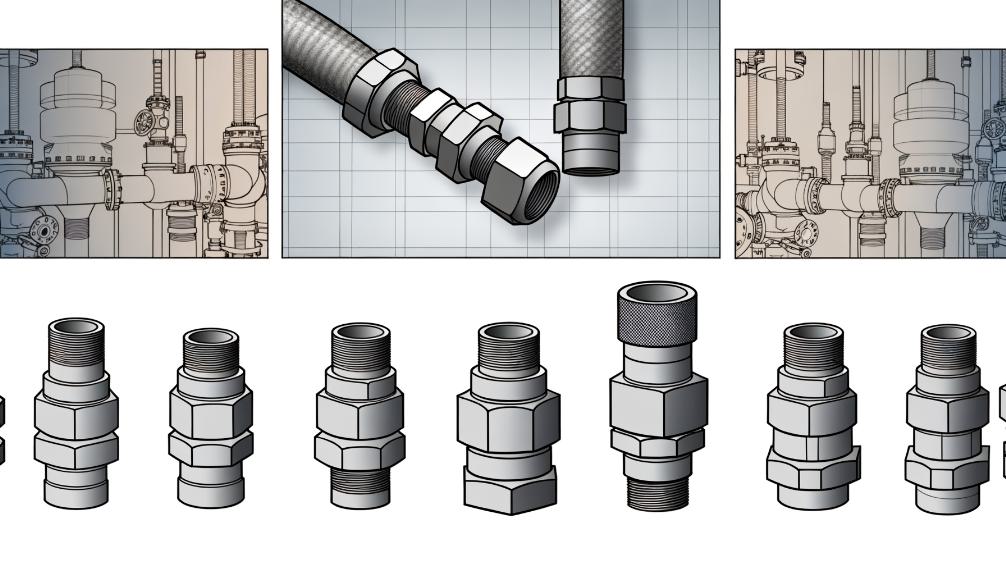
For your composite hose applications, you'll typically use Camlock couplings, flanged fittings, and dry break connections. Camlock couplings offer a vital, secure connection without the need for tools, suitable for quick changes, and come in various materials like stainless steel and aluminum, guaranteeing compatibility. Flanged fittings are ideal for high-pressure scenarios, requiring precise bolt tightening and robust gasket alignment for a durable seal. Dry break connections are essential to minimize spillage during disconnections, enhancing safety and environmental protection. Each fitting type ensures top performance and safety, tailored to specific operational needs. Exploring these options further could greatly benefit your setup.
Camlock Couplings Explained
Camlock couplings, also known as cam and groove fittings, provide a quick and reliable method for connecting and disconnecting hoses used in various industrial applications. You'll find these couplings essential when dealing with liquids, gases, and bulk solids, making them versatile for industries like agriculture, chemical manufacturing, and firefighting.
Material compatibility is an important aspect to take into account when selecting the right Camlock couplings. These fittings come in a range of materials, including stainless steel, aluminum, brass, and polypropylene. Each material offers distinct advantages depending on your specific needs. For instance, stainless steel couplings are highly resistant to corrosion and are suitable for sanitary environments, while polypropylene is lightweight and excellent for chemical and acid transfers. You must choose a material that not only matches the chemical compatibility of your medium but also stands up to the operating environment.
Moreover, installation ease is another significant benefit of Camlock couplings. Their design allows for quick and easy assembly without the need for tools. You simply insert the male adapter into the female coupler and close the cam arms to secure the connection. This simplicity reduces downtime and increases efficiency in setups where frequent hose changes are necessary, ensuring a leak-free and secure fit every time.
Flanged Fittings Overview
While Camlock couplings offer quick disconnect capabilities, flanged fittings provide a robust and permanent connection essential for handling high pressures and large pipe diameters in industrial applications. You'll find that flanged fittings are integral in scenarios where durability and reliability are paramount. These fittings are typically categorized by their pressure ratings, which dictate the maximum pressure they can handle without failure. It's important that you select a fitting whose pressure rating matches or exceeds the system's requirements to guarantee safety and functionality.
When it comes to installation techniques, precision is key. You must make sure that the flange faces are parallel and the gasket is properly aligned to avoid leaks. The bolts must be evenly tightened in a crisscross pattern to distribute the load uniformly. This meticulous approach minimizes the risk of flange leakage, which can be catastrophic in high-pressure environments.
Moreover, the material of the flanged fittings plays a significant role in their performance. Materials like stainless steel or carbon steel are common and provide the necessary strength and corrosion resistance required for many industrial applications. Always verify that the material compatibility aligns with the fluids being handled in your system to prevent degradation or failure.
Dry Break Connections Benefits
Dry break connections greatly reduce the risk of spillage during hose or line disconnections, enhancing safety and efficiency in fluid handling systems. When you're dealing with hazardous or expensive fluids, these fittings are indispensable for their ability to prevent leaks and minimize losses. They're engineered for quick and secure engagement and disengagement, which not only speeds up operations but also reduces downtime.
Here are the key benefits of dry break connections:
- Leak Prevention: These fittings are designed with self-sealing mechanisms that activate the moment disconnection occurs. This feature is important in preventing any fluid from escaping into the environment, thereby safeguarding against contamination and potential hazards.
- Maintenance Ease: With fewer spill incidents, there's less need for cleanup and maintenance. This simplicity extends the life of the equipment and reduces overall maintenance costs.
- Enhanced Safety: By minimizing spillage, dry break connections reduce the risk of slips, falls, and other accidents that can occur during fluid transfer.
- Environmental Protection: They play a pivotal role in preventing spills that could lead to soil or water contamination, aligning with environmental compliance standards.
Incorporating these fittings into your fluid handling systems ensures a safer, cleaner, and more efficient operation.
Conclusion
You've explored essential fittings for composite hose applications:
- Camlock couplings provide quick, secure connections;
- Flanged fittings offer robust seals for high-pressure environments;
- Dry break connections minimize spillage, enhancing safety.
Each fitting serves distinct operational needs, ensuring efficiency and reliability. When selecting, consider your specific application requirements—pressure levels, fluid types, and environmental considerations.
Precision in fitting choice not only optimizes performance but also reinforces safety protocols and operational integrity in your systems.
© Copyright 2024. All RIghts Reserved
